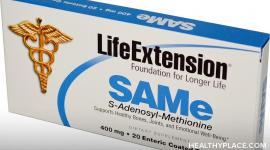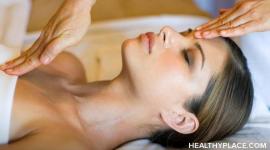Alexander Technique for Depression, Stress
Some claim the Alexander Technique can treat depression, stress and chronic pain, but there's little scientific evidence that the Alexander Technique is effective.
Before engaging in any complementary medical technique, you should be aware that many of these techniques have not been evaluated in scientific studies. Often, only limited information is available about their safety and effectiveness. Each state and each discipline has its own rules about whether practitioners are required to be professionally licensed. If you plan to visit a practitioner, it is recommended that you choose one who is licensed by a recognized national organization and who abides by the organization's standards. It is always best to speak with your primary health care provider before starting any new therapeutic technique.
Background
The Alexander technique is an educational program that aims to change habitual patterns of movement and posture that are thought to be harmful. Teachers of the Alexander technique guide clients ("students") through various movements using verbal directions and light touch. The goal of these sessions can be to improve coordination and balance, reduce tension, relieve pain, decrease fatigue, improve various medical conditions or promote well-being. Students are encouraged to use what they learn in everyday life. Actors, dancers and athletes use the Alexander technique to improve performance.
F.M. Alexander, an Australian-English actor, developed the Alexander technique. He believed that poor head and neck posture was the cause of his recurrent voice loss. He suggested that people be trained to alter harmful movement patterns and positions.
In 1964, the American Center for the Alexander Technique was founded to provide teaching certification. The certification process generally involves 1,600 hours of training over three years in an approved program. The North American Society of Teachers of the Alexander Technique was established in 1987 to educate the public and to maintain standards for certification of teachers and training courses in the United States. The Alexander technique is taught at wellness centers, through health education programs and by individual teachers.
Theory
Basic beliefs underlying the Alexander technique are that musculoskeletal movements and relationships can directly affect other aspects of health or function and that beneficial movement patterns can be reinforced through repetition. The position of the head and spine is thought to be important in this approach. Many physiologists and behavioral scientists are advocates of musculoskeletal techniques similar to the Alexander technique, although there are few scientific studies of the Alexander technique specifically.
Evidence
Scientists have studied the Alexander technique for the following health problems:
Lung function
A small amount of research reports improved lung function in musicians using the Alexander technique, although these studies are poorly designed and results are mixed. Better evidence is necessary to make any conclusion.
Balance
A small amount of research reports that lessons in the Alexander technique may improve balance in people older than 65 years. However, better-quality evidence is needed before a clear conclusion can be reached.
Temporomandibular joint chronic pain
Evidence is limited, and no firm conclusion can be drawn based on scientific research.
Back pain
Evidence is limited, and no firm conclusion can be drawn based on scientific research.
Parkinson's disease
A small amount of research reports that instruction in the Alexander technique may improve fine and gross movements and reduce depression in patients with Parkinson's disease. However, better evidence is necessary before a clear conclusion can be reached.
Posture in children
Evidence is limited, and no firm conclusion can be drawn based on scientific research. The long-term effects of such instruction in children are not known.
Unproven Uses
The Alexander technique has been suggested for many other uses, based on tradition or on scientific theories. However, these uses have not been thoroughly studied in humans, and there is limited scientific evidence about safety or effectiveness. Some of these suggested uses are for conditions that are potentially life-threatening. Consult with a health care provider before using the Alexander technique for any use.
| Anxiety Asthma Athletic performance Carpal tunnel syndrome Chronic bronchitis Chronic fatigue syndrome Coordination disorders Depression Digestive disorders Epilepsy Fibromyalgia Flexibility Frozen shoulder Headache Heart disease High blood pressure Hip pain Hoarse voice Joint disorders Labor and delivery (improved breathing, relaxation) Laryngitis Leg cramps Low back pain | Low energy Lyme disease Migraine Multiple sclerosis Neck pain Osteoarthritis Osteoporosis Panic disorder Performance anxiety Physical endurance Pregnancy (reduced back strain, less compression of internal organs or blood vessels, improved ability to rise from sitting position) Repetitive strain injury Rheumatic disorders Sciatica Scoliosis Sleep disorders Stomach ulcers (peptic ulcer disease) Stress and stress-related problems Stroke Systemic lupus erythematosus Tendonitis Tennis elbow Tension-related sexual disorders Voice strain |
Potential Dangers
Instruction or practice of the Alexander technique has not been associated with reports of severe complications. However, safety has not been studied systematically. Some practitioners believe that this technique may be less beneficial in people with mental illness or learning disabilities. Safety during pregnancy has not been established scientifically, although the Alexander technique has been used by pregnant women and during delivery without reports of complications.
Do not rely on the Alexander technique alone as an approach to treat medical conditions. Speak with your health care provider if you are considering using the Alexander technique.
Summary
The Alexander technique has been used to address several health issues, but it has not been proven effective for any specific condition. Do not rely on the Alexander technique alone to treat a potentially severe medical condition. Speak with your health care provider if you are considering using the Alexander technique.
The information in this monograph was prepared by the professional staff at Natural Standard, based on thorough systematic review of scientific evidence. The material was reviewed by the Faculty of the Harvard Medical School with final editing approved by Natural Standard.
Resources
- Natural Standard: An organization that produces scientifically based reviews of complementary and alternative medicine (CAM) topics
- National Center for Complementary and Alternative Medicine (NCCAM): A division of the U.S. Department of Health & Human Services dedicated to research
Selected Scientific Studies: Alexander Technique
Natural Standard reviewed more than 70 articles to prepare the professional monograph from which this version was created.
Some of the more recent studies are listed below:
- Austin JH, Pullin GS. Improved respiratory function after lessons in the Alexander technique of musculoskeletal education (abstract). Am Rev Respiratory Dis 1984;129(4 pt 2):A275.
- Austin JH, Ausubel P. Enhanced respiratory muscular function in normal adults after lessons in proprioceptive musculoskeletal education without exercises. Chest 1992;102(2):486-490.
- Cacciatore TW, Horak FB, Henry SM. Improvement in automatic postural coordination following alexander technique lessons in a person with low back pain. Phys Ther 2005;85(6):565-578.
- Dennis RJ. Musical performance and respiratory function in wind instrumentalists: effects of the Alexander technique of musculoskeletal education (abstract). Dissertation Abstracts International 1988;48(7):1689a.
- Dennis J. Alexander technique for chronic asthma. Cochrane Database Syst Rev 2000;(2):CD000995.
- Dennis RJ. Functional reach improvement in normal older women after Alexander technique instruction. J Gerontol A Biol Sci Med Sci 1999;54(1):M8-11.
- Ernst E, Canter PH. The Alexander technique: a systematic review of controlled clinical trials. Forsch Komplementarmed Klass Naturheilkd 2003;10(6):325-329.
- Knebelman S. The Alexander technique in diagnosis & treatment of craniomandibular disorders. Basal Facts 1982;5(1):19-22.
- Maitland S, Horne R, Burtin M. An exploration of the application of the Alexander technique for people with learning disabilities. Br J Learn Disabil 1996;24:70-76.
- Nuttall W. The Alexander principle: a consideration of its relevance to early childhood education in England today. Eur Early Child Ed Res J 1999;7(2):87-101.
- Stallibrass C. An evaluation of the Alexander technique for the management of disability in Parkinson's disease: a preliminary study. Clin Rehabil 1997;11(1):8-12.
- Stallibrass C, Sissons P, Chalmers C. Randomized controlled trial of the Alexander technique for idiopathic Parkinson's disease. Clin Rehabil 2002;Nov, 16(7):695-708.
- Valentine ER, Gorton TL, Hudson JA, et al. The effect of lessons in the Alexander technique on music performance in high and low stress situations. Psychol Music 1995;23:129-141.
back to: Alternative Medicine Home ~ Alternative Medicine Treatments
APA Reference
Staff, H.
(2008, October 13). Alexander Technique for Depression, Stress, HealthyPlace. Retrieved
on 2026, January 1 from https://www.healthyplace.com/alternative-mental-health/treatments/alexander-technique-for-depression-stress


